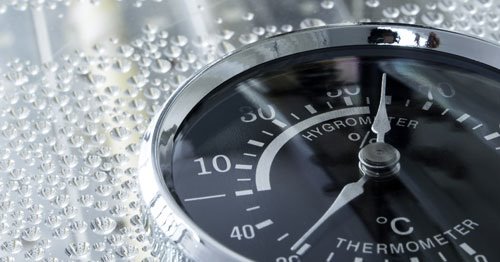Considering the wide variety of environmental variables that influence water vapor and affect measurement, it’s important to know precisely which type of instrument and technology will enable you to measure most accurately in any given application. It is important to know the various factors of your application that will affect different types of measurement technology.
Consider these 10 questions to ask and answer as you select the instrument and associated technology:
1. Why do we need to measure humidity?
2. What parameter will we require to quantify water vapor?
3. What is the expected range of measurement? Temperature? Relative Humidity? Pressure?
4. What level of performance will we require? Uncertainty? Long term stability? Response time? Resolution of output?
5. What type of output will we require?
6. What is the most appropriate mechanical configuration?
7. What is the composition of the air or gas to be measured?
8. What are the installation requirements?
9. What are we willing to pay for the required performance?
10. What should I expect from the manufacturer for support after the sale?
The answers to these questions will steer you in the right direction for choosing technology and configuration of your hygrometer. Given the difficulties of measuring humidity, the confusing claims made by many suppliers of humidity instrumentation, and the broad range of cost and quality for apparently identical specifications, how does one choose a proper and accurate instrument for a particular application?
Alert: Because there is no real physical standard for relative humidity calibration, inaccurate specifications for humidity instruments is a rampant problem among instrument providers – more common than with many other types of instrument.
This abuse leads to specifications that are of limited value when comparing instruments from various manufacturers. You must dig deep into the specifications and claims of instrument manufacturers.
Carefully examine the supplier’s claims and support documentation in the following areas:
- • sensor linearity
- • temperature constants
- • hysteresis
- • calibration errors
- • and long-term stability of sensor and electronics

Myth/Fact: Not all humidity sensor specifications are created equally. Accuracy specifications are created by manufacturers, and each manufacturer assigns them differently. Accuracy may be stated in a very narrow band based on a short period of time in a benign environment. That’s why it’s important to evaluate accuracy specifications with a critical eye.
Ask:
- • What is the humidity range and temperature range for the specification?
- • What happens to the specification as the sensor ages?
- • Are there any contaminants that affect the accuracy?
- • Do certain humidity and temperature conditions affect the long-term stability of the sensor? (i.e. high temperature + high humidity)
- • Does the specification include all sources of error such as hysteresis, temperature dependency, linearity and calibration?
- • What were the type, condition and uncertainty of the standard used for the determination of the specification?
The answers to these questions will help you understand the significant differences between a low-cost and a high-end hygrometer, and what you can expect in its level of performance
Learn more about humidity in the following video: “Relative Humidity Measurement Explained”
See previous blog posts:
Theory 1 – What is Humidity?
Theory 2 – Relative Humidity, Pressure and Temperature
Theory 3 – Humidity and Vapor Pressure
Theory 4 – Definitions of Humidity: Vapor Concentration
Theory 5 – Effect of Temperature and Pressure on % rh
Theory 6 – Humidity Academy Theory 6 – The Capacitive Sensor
Theory 7 – Humidity Academy Theory 7 – The Wet Bulb/Dry Bulb Technology
Theory 8 – Humidity Academy Theory 8 – Chilled Mirror and Aluminum Oxide Technology
Related Products
Standard Humidity and Temperature Transmitter - Rotronic HF3
Precision & Performance Humidity and Temperature Transmitter – Rotronic HF5A advanced
Want to see more information like this?
Sign up to one of our Industry newsletters and you’ll receive our most-recent related news and insights all directly to your inbox!
Sign Up